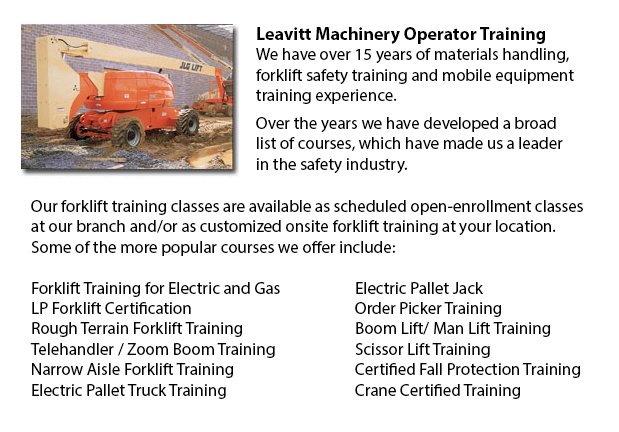
Aerial Lift Certification Mississauga - Aerial Lift Certification is for personnel who need a thorough knowledge of aerial lift safety. Construction craftsmen, supervisors and maintenance workers need this training to make certain that operators and inspectors are qualified. Federal, provincial and state regulations need companies to be certified to be able to carry out in-house aerial lift checks.
The majority of workers who are required to work at elevated level will usually use the same means to get to these required heights, regardless of the type of work that has to be carried out. Scissor lifts and aerial lifts are the mechanized machines utilized to be able to lift equipment and workers to elevated places.
Bucket trucks referred to as Cherry Pickers are aerial platforms which feature a bucket and supported boom. The main hazard to making use of this kind of platform is normally falls, electrocutions, and tip overs. Certification guarantees that workers who use aerial lifts are trained correctly in order to safely operate the equipment. Training likewise guarantees that workers know how to maintain aerial work platforms based on the directions of the manufacturer.
Aerial lift training certification programs would include the following: Aerial lifts that are mounted to vehicles, Boom-supported aerial lifts and scissors lifts. Trainees will know about safe operating procedures and would gain an understanding about the hazards which often cause aerial lift incidents. They will become technically competent in the different types of aerial lifts, as well as terminology and components. From interpreting rated capacity charts to selecting the best aerial lift for the job, the certification program will provide employees with everything they need to know to be able to safely do their work.
People who are assigned the task of checking aerial lift machines should know how to inspect gears, booms, structural parts, operating mechanisms, control systems and functions, braking systems, power plants, shafts and pins, attachments, pneumatic and electric parts, hydraulic, operator aids and emergency safety devices, etc. Training would consist of the following: the inspector's role in reducing accidents and liability exposure; how to perform a pre-use, annual and monthly inspection; how to interpret and apply regulations about aerial lift safety standards; how to write inspection reports; inspection procedures, techniques and checklists; complying with record keeping requirements; understanding and applying the three levels of aerial lift inspection; and when to remove defective aerial lifts from service.
-
Forklift Certification Courses Mississauga
Forklift Certification Courses Mississauga - Forklift certification courses really help to be able to make certain that businesses operating forklifts, follow the local and regional rules. The operators of the forklift must go through forklift certif... More -
Heavy Equipment Certification Mississauga
Heavy Equipment Certification Mississauga - Big pieces of machinery and heavy-duty vehicles are often referred to as heavy equipment. This broad term covers utility vehicles from agricultural and forestry implements to construction equipment, civil e... More -
Skid Steer Loader Training in Mississauga
The engine powered skid-steer loader has a rigid and small frame, outfitted together with lift arms that can attach to lots of industrial attachments and tools to perform numerous labor saving tasks. Usually, skid-steer loaders are four-wheel drive v... More -
Bucket Truck Training Mississauga
Bucket Truck Training Mississauga - The Vehicle-Mounted Aerial Work Platform or bucket truck training program is designed to decrease the possibility of incident and personal injury when working with or in close proximity to bucket trucks by efficien... More -
Scissor Lift Certification Mississauga
Scissor Lift Certification Mississauga - Scissor lift platforms are used at work locations to enable tradespeople - like for example welders, masons and iron workers - to reach their work. Utilizing a scissor lift platform is typically secondary to t... More -
Order Picker License Mississauga
Order Picker License Mississauga - Order preparation operation or order picking as it is more normally known is a process used within warehouse operations and comprises personnel called order pickers. The order picker's job is to take and collect art... More -
Forklift Train The Trainer Mississauga
Forklift Train The Trainer Mississauga - Our company provides the most advanced and latest Forklift Training courses in North America. We provide industrial workplace safety training, Train the Trainer, mobile equipment operator, and self study train... More -
Aerial Platform Training Mississauga
Aerial Platform Training Mississauga - Aerial forklifts are able to accommodate numerous odd jobs involving high and tricky reaching spaces. Normally utilized to execute daily maintenance in buildings with tall ceilings, trim tree branches, hoist hea... More

Forklift Training Mississauga
TOLL FREE: 1-888-254-6157
Mississauga, Ontario
forklifttrainingmississauga.ca
Email Us
About Us


